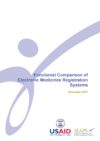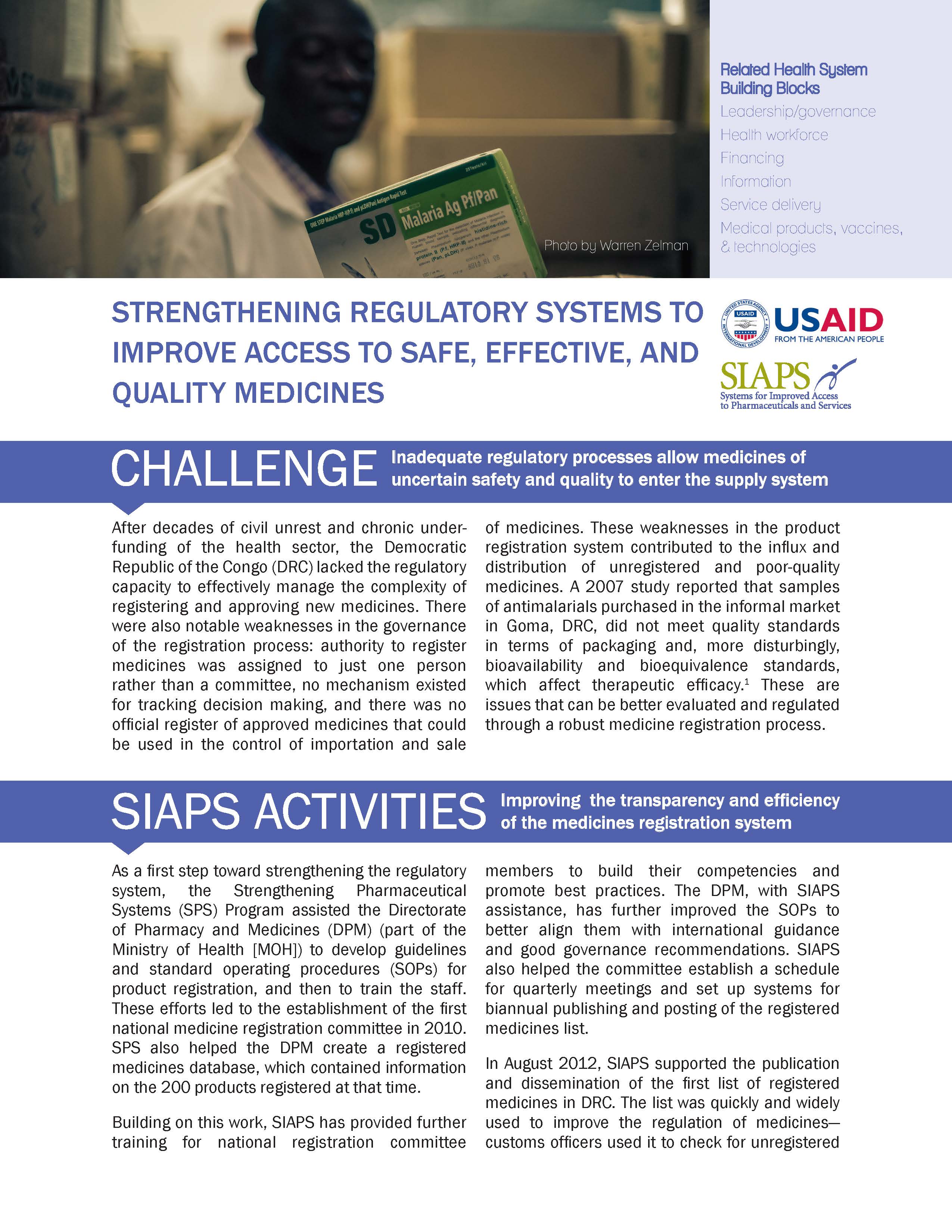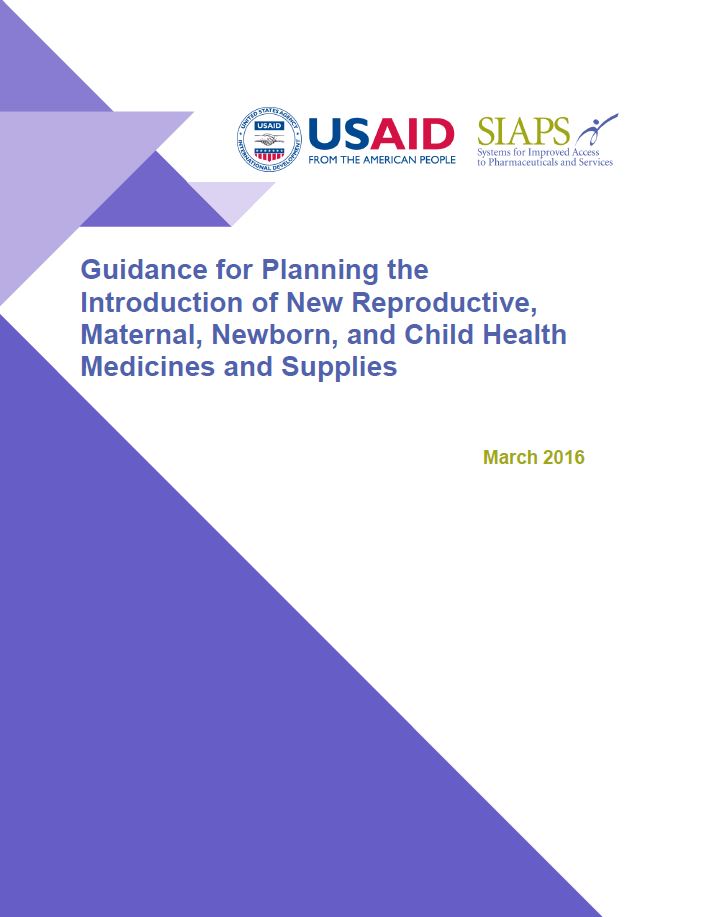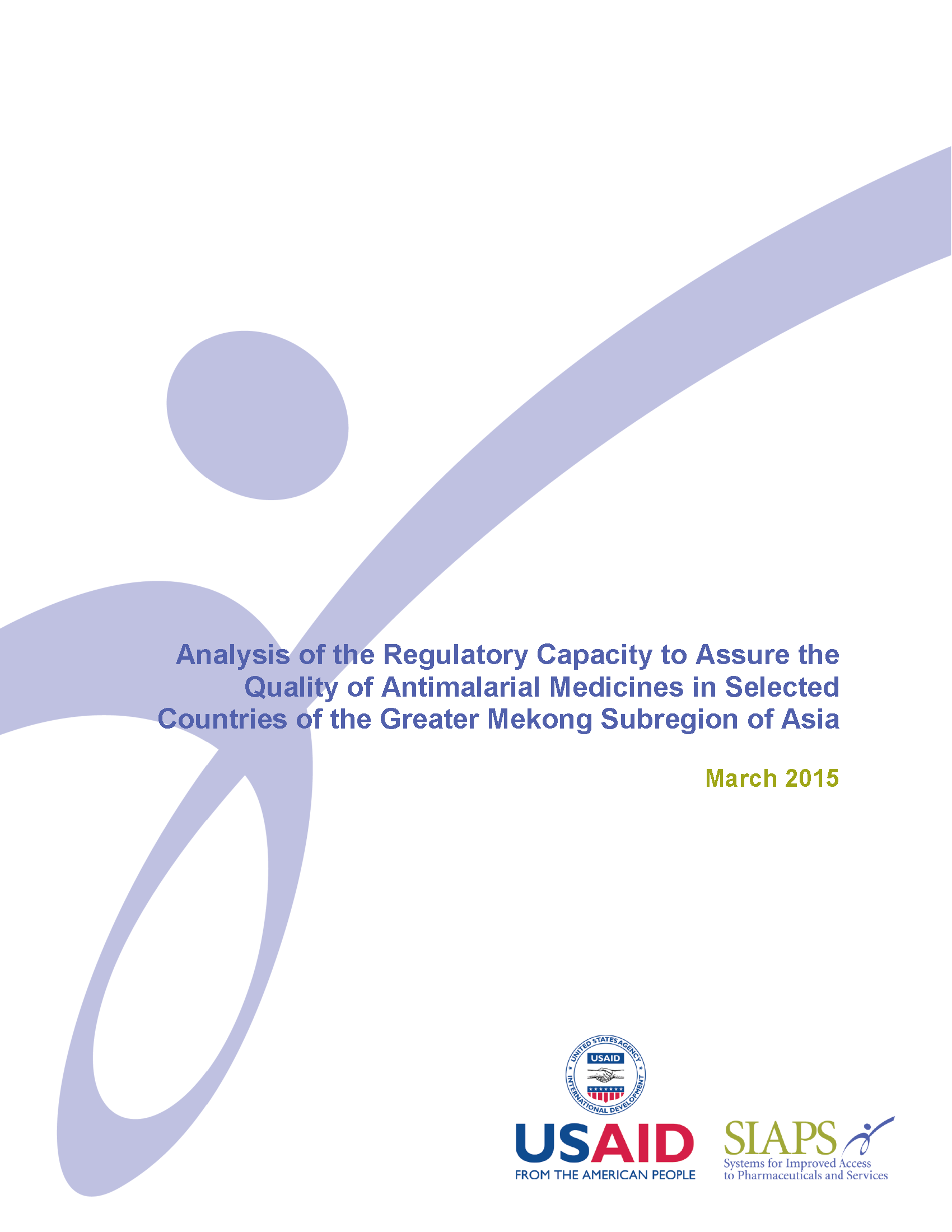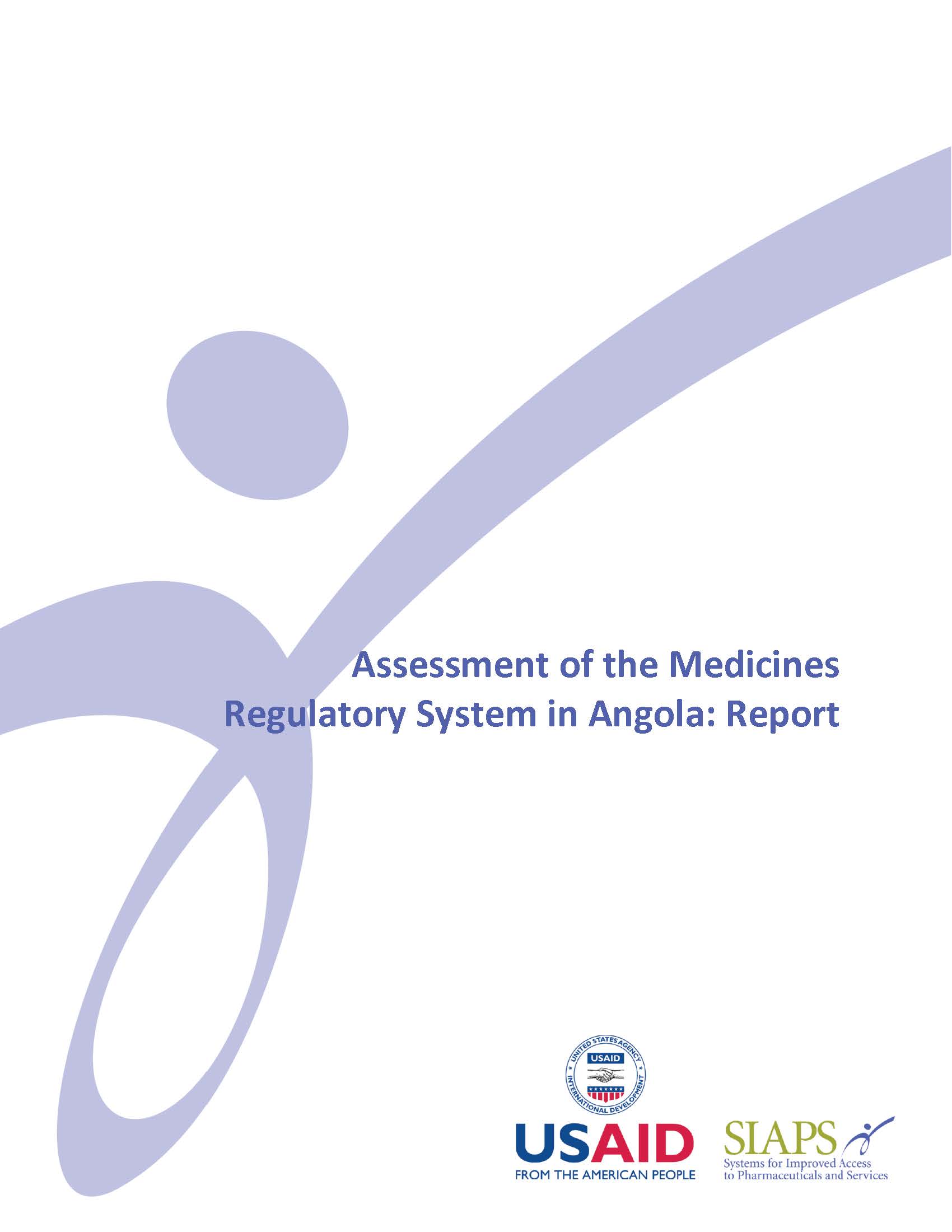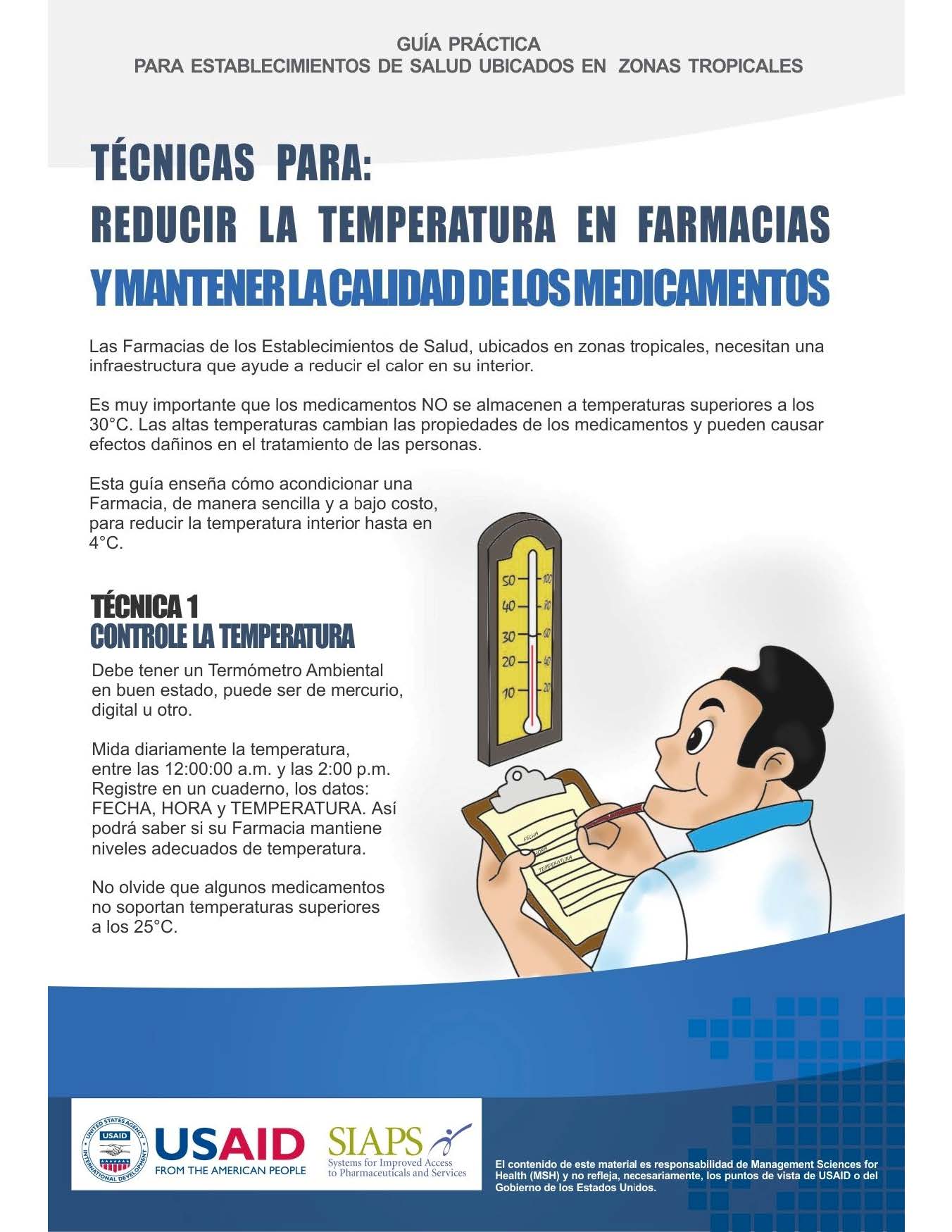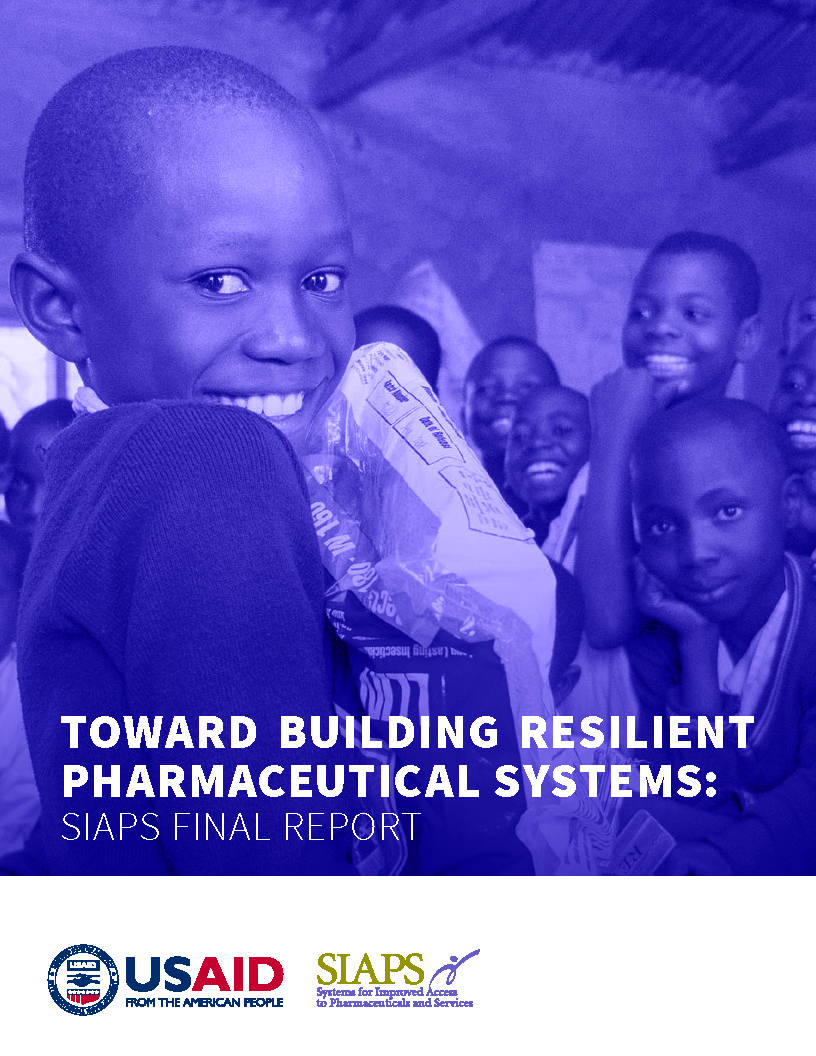In November 2016, SIAPS offered technical assistance to DPMED to optimize the current medicine registration system, potentially by using the web-based medicine registration tool Pharmadex. After the assessment at DPMED in August 2017, SIAPS found that the SIGIP-ARP system in place was a software recommended for the regional West African Economic and Monetary Union (WAEMU) … Read more
SIAPS supported the Swaziland Ministry of Health (MOH) in mobilizing key stakeholders from the Swaziland National AIDS Program and the National Tuberculosis Control Program to introduce and implement an active surveillance system for patients on ARVs and anti-TB treatment. SIAPS provided technical assistance to MOH’s National Pharmacovigilance Unit (NPVU) to develop the protocol and tools to implement … Read more
SIAPS technical support has helped strengthen the capacity of the national registration committee and streamline medicines registration. As a result, the number of registered medicines has increased from 200 in 2010 to over 3,000 in 2014; 72% of the medicines included on DRC’s essential medicines list currently have at least one product registered, up from 44% in 2011. The backlog of applications has … Read more
The purpose of this document is to provide guidance to program managers in ministries of health at national and sub-national levels as well as personnel in other interested organizations on actions to take and factors to consider when expanding access to essential RMNCH commodities. While this document focuses on RMNCH medicines and supplies, it may be used as a … Read more
B Yeager, governance, guidance document, Human Resource Management, M Malik, pharmaceutical financing, Pharmaceutical Management Information System, Product Quality, RMNCH, S Diarra, Supply chain management
SIAPS conducted a review of regulatory and quality assurance efforts in the GMS with the following objectives— To inform PMI of past and current initiatives to improve the capacity of the region to combat counterfeit, substandard, and banned antimalarial medicines To understand the current barriers to effective medicine quality control for malaria To recommend specific … Read more
Assessment, B Santoso, D Lee, E Kim, governance, Malaria., pharmaceutical regulations, PMI, Product Quality, Quality Assurance, Technical Report
The Ministry of Health (Ministério da Saúde; MINSA)’s National Directorate of Medicines and Equipment (Direccao Nacional de Medicamentos e Equipamentos; DNME) is responsible for regulating medicines and other pharmaceutical products in Angola in collaboration with the Inspectorate General of Health (Inspecção-Geral da Saúde; IGS). Preliminary reports indicated that the regulatory system was not fully functional … Read more
Angola, Assessment, D Tjipura, governance, HIV/AIDS, M Thumm, Malaria., P Gaparayi, pharmaceutical regulations, Pharmacovigilance, Product Quality, Technical Report, tuberculosis, W Goredema
Pharmacies that serve health clinics located in tropical areas need infrastructure that will help lower their inside air temperature. It is very important that medicines are stored below 30°C, remembering that certain medicines must be stored at temperatures below 25°C. Higher temperatures tend to change medicine quality, which can make them less effective. This guide provides instruction on … Read more
Pribluda VS, Evans L, Barillas E, Marmion J, Lukulay P, Chang J. Were medicine quality and pharmaceutical management contributing factors in diminishing artemisinin efficacy in Guyana and Suriname? Malaria Journal. 2014;13:77. Read the full article
AMI, Antimicrobial Resistance, E Barillas, Guyana, J Chang, J Marmion, Journal Article, L Evans, Malaria., P Lukulay, Product Quality, Suriname, VS Pribluda
Tadeg H, Berhane Y. Substandard and counterfeit antimicrobials: recent trends and implications to key public health interventions in developing countries. East Afr J Public Health. 2012;9(2):85-9. View the abstract
